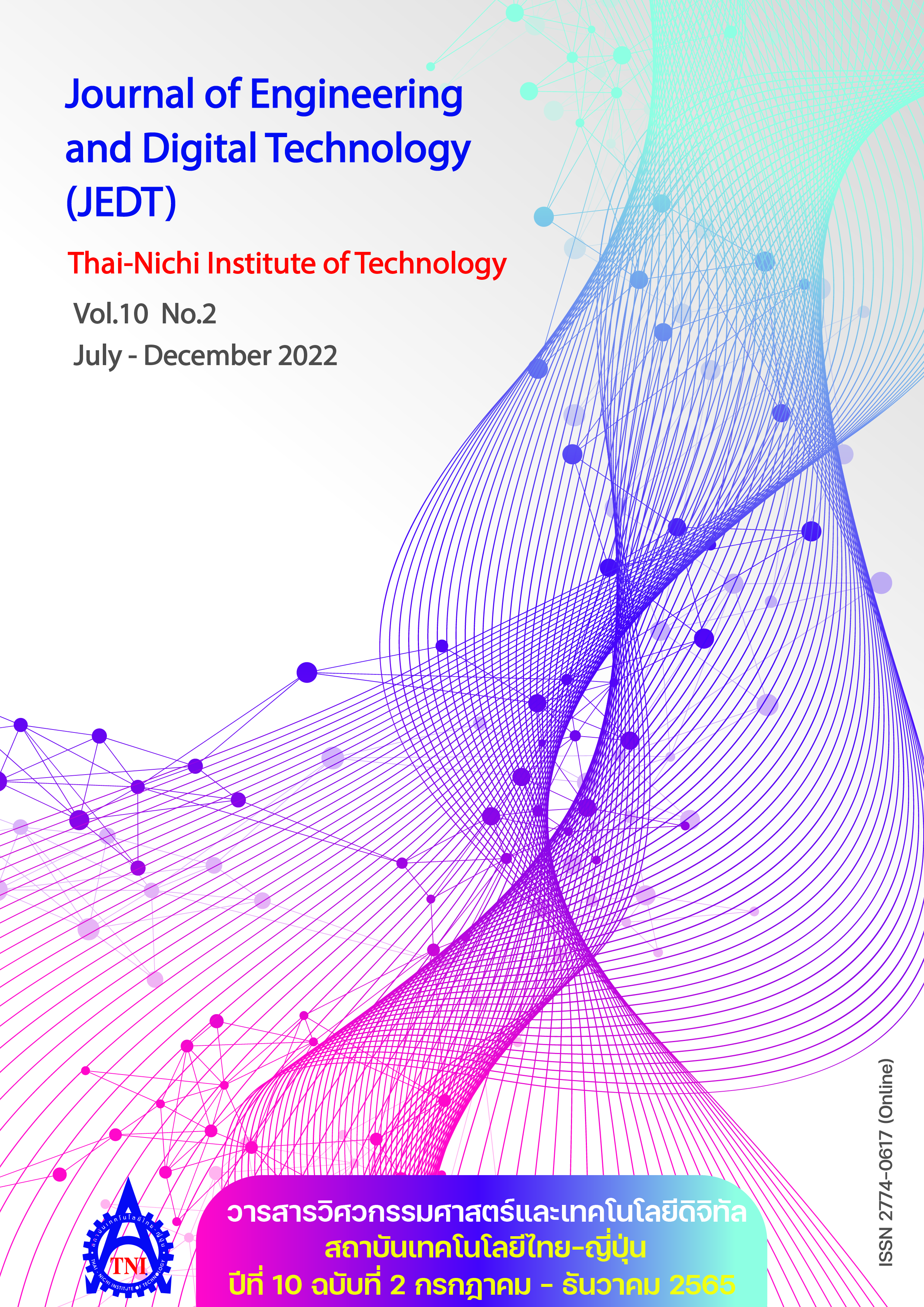Layout Design and Storage Relocation for Warehouse Efficiency Improvement in Warehouse: A Case Study of a Public Hospital
Main Article Content
Abstract
The objective of this study is to improve the warehouse performance by redesigning the warehouse layout and re-location for storing the odds and end in a public hospital. As surveyed, the background problem reveals that there is an ineffective storage policy for each product group, resulting in unvalued time-consuming and unproductive traveling in picking processes. To overcome this issue, this research gathered data on SKUs’ picking frequency in total 244 items, categorized by three product groups, namely mold, odds and end, and office equipment. For the analysis, two main approaches: ABC class-based layout and storage relocation assignment model are applied for finding the appropriate warehouse layout and optimal storage location. The result from a comparative analysis of performance evaluations shows that the optimal layout derived by picking frequencies with considering of items’ prioritization is the best design. With the new layout, the case gain benefits of better efficiency in terms of the shortest travel distance reduction from 81,950.6 to 77,591.7 meters a year (account for 5% of reduction) and the average time of picking processes deducts from 34.2 to 32.13 hours per year.
Article Details

This work is licensed under a Creative Commons Attribution-NonCommercial-NoDerivatives 4.0 International License.
Article Accepting Policy
The editorial board of Thai-Nichi Institute of Technology is pleased to receive articles from lecturers and experts in the fields of engineering and technology written in Thai or English. The academic work submitted for publication must not be published in any other publication before and must not be under consideration of other journal submissions. Therefore, those interested in participating in the dissemination of work and knowledge can submit their article to the editorial board for further submission to the screening committee to consider publishing in the journal. The articles that can be published include solely research articles. Interested persons can prepare their articles by reviewing recommendations for article authors.
Copyright infringement is solely the responsibility of the author(s) of the article. Articles that have been published must be screened and reviewed for quality from qualified experts approved by the editorial board.
The text that appears within each article published in this research journal is a personal opinion of each author, nothing related to Thai-Nichi Institute of Technology, and other faculty members in the institution in any way. Responsibilities and accuracy for the content of each article are owned by each author. If there is any mistake, each author will be responsible for his/her own article(s).
The editorial board reserves the right not to bring any content, views or comments of articles in the Journal of Thai-Nichi Institute of Technology to publish before receiving permission from the authorized author(s) in writing. The published work is the copyright of the Journal of Thai-Nichi Institute of Technology.
References
M. Hompel and T. Schmidt, Warehouse Management: Automation and Organisation of Warehouse and Order Picking Systems. Heidelberg, Germany: Springer, 2007.
N. Jamili, P. L. van den Berg, and R. Koster, “Quantifying the impact of sharing resources in a collaborative warehouse,” Eur. J. Oper. Res., vol. 302, no. 2, pp. 518–529, Oct. 2022.
J. J. Bartholdi and S. T. Hackman, Warehouse & distribution science: release 0.96. Atlanta, GA, USA: Georgia Institute of Technology, 2014.
M. M. Tambunan, K. Syahputri, I. Rizkya, R. M Sari, and M. D. Cahyo, “Storage design using fast moving, slow moving and non moving (FSN) analysis,” MATEC Web Conf., vol. 197, 2018, Art. no. 14005.
W. Monprasith, “Design of layout and material handling system for a stationary warehouse,” (in Thai), M.S. thesis, Dept. Ind. Eng., Chulalongkorn Univ., Bangkok, Thailand, 2014.
W. Sanpote and C. Kasemset, “Corrugated package plant layout design for the problem of uncertain demand,” (in Thai), TJOR, vol. 4, no. 1, pp. 16–25, 2016.
K. Lawhawichitsak and A. Phongsatornwiwat, “Applying a two-stage clustering-assignment model for an item-associated product family warehouse storage location problem,” (in Thai), TJOR, vol. 9, no. 1, pp. 92–105, 2021.
H. M. Beheshti, D. Grgurich, and F. W. Gilbert, “ABC inventory management support system with a clinical laboratory application,” J. Promot. Manag., vol. 18, no. 4, pp. 414–435, 2012, doi: 10.1080/10496491.2012.715502.
S. Muadpol, “Joint lot sizing and warehouse product layout problems under uncertain demand,” (in Thai), M.S. thesis, Dept. Mech. Process Syst. Eng., Suranaree Univ., Nakhon Ratchasima, Thailand, 2019.
K. J. Roodbergen, “Storage assignment for order picking in multiple-block warehouses,” in Warehousing in the Global Supply Chain: Advanced Models, Tools and Applications for Storage Systems. London, U.K.: Springer, 2012, pp. 139–155.
O. Kheawpum, S. Choosakoonkriang, S. Supaluknari, and P. Junmon, “Estimation of stature of person from shoe step length,” (in Thai), Rajamangala Univ.Technol. Tawan-ok Res. J., vol. 13, no. 1, pp. 30–37, 2020.


